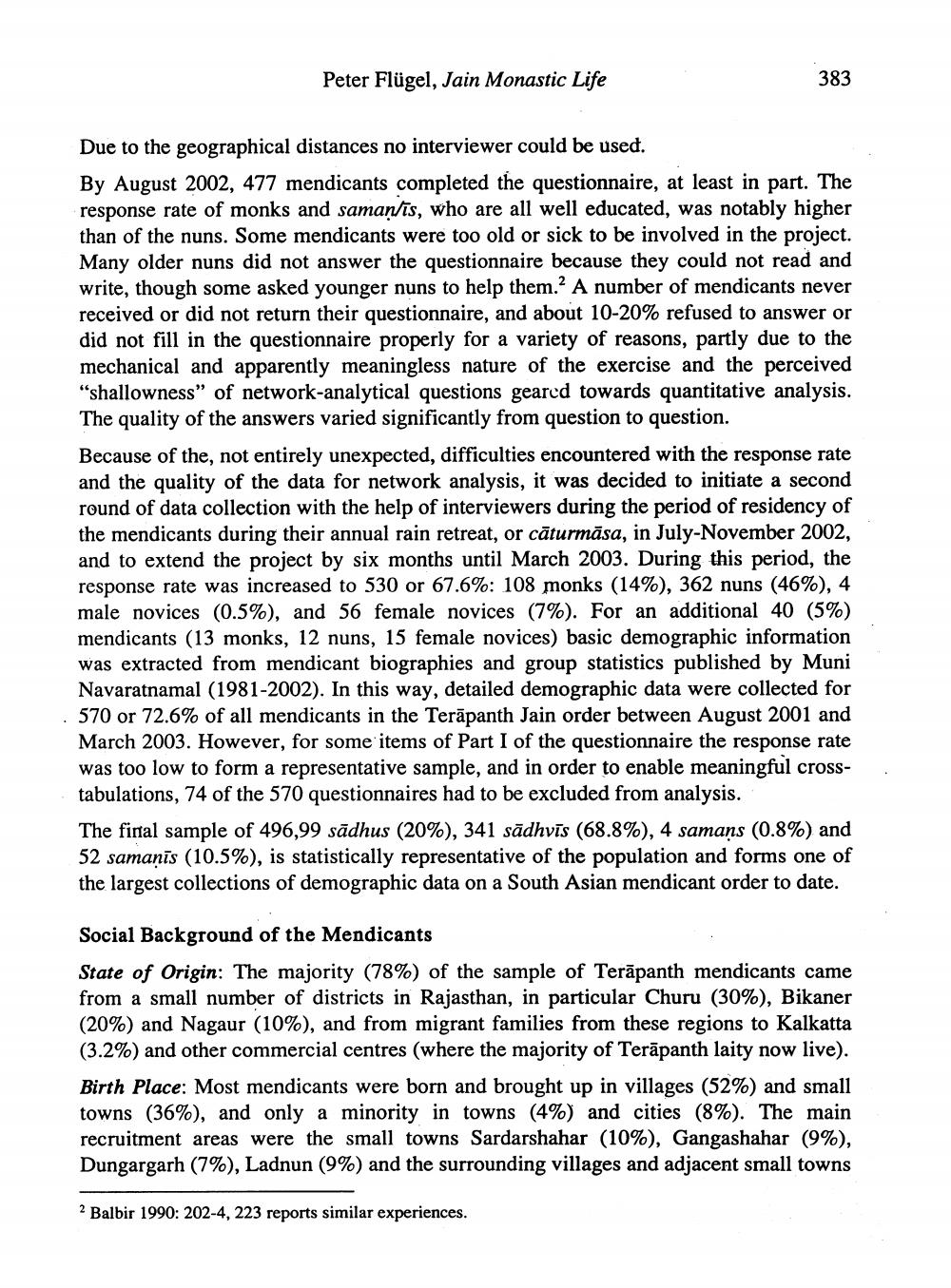________________
Peter Flügel, Jain Monastic Life
383
Due to the geographical distances no interviewer could be used. By August 2002, 477 mendicants completed the questionnaire, at least in part. The response rate of monks and samanlis, who are all well educated, was notably higher than of the nuns. Some mendicants were too old or sick to be involved in the project. Many older nuns did not answer the questionnaire because they could not read and write, though some asked younger nuns to help them.? A number of mendicants never received or did not return their questionnaire, and about 10-20% refused to answer or did not fill in the questionnaire properly for a variety of reasons, partly due to the mechanical and apparently meaningless nature of the exercise and the perceived "shallowness” of network-analytical questions geared towards quantitative analysis. The quality of the answers varied significantly from question to question. Because of the, not entirely unexpected, difficulties encountered with the response rate and the quality of the data for network analysis, it was decided to initiate a second round of data collection with the help of interviewers during the period of residency of the mendicants during their annual rain retreat, or cāturmāsa, in July-November 2002, and to extend the project by six months until March 2003. During this period, the response rate was increased to 530 or 67.6%: 108 monks (14%), 362 nuns (46%), 4 male novices (0.5%), and 56 female novices (7%). For an additional 40 (5%) mendicants (13 monks, 12 nuns, 15 female novices) basic demographic information was extracted from mendicant biographies and group statistics published by Muni Navaratnamal (1981-2002). In this way, detailed demographic data were collected for 570 or 72.6% of all mendicants in the Terāpanth Jain order between August 2001 and March 2003. However, for some items of Part I of the questionnaire the response rate was too low to form a representative sample, and in order to enable meaningful crosstabulations, 74 of the 570 questionnaires had to be excluded from analysis. The final sample of 496,99 sādhus (20%), 341 sādhvīs (68.8%), 4 samaņs (0.8%) and 52 samaņīs (10.5%), is statistically representative of the population and forms one of the largest collections of demographic data on a South Asian mendicant order to date.
Social Background of the Mendicants State of Origin: The majority (78%) of the sample of Terapanth mendicants came from a small number of districts in Rajasthan, in particular Churu (30%), Bikaner (20%) and Nagaur (10%), and from migrant families from these regions to Kalkatta (3.2%) and other commercial centres (where the majority of Terāpanth laity now live). Birth Place: Most mendicants were born and brought up in villages (52%) and small towns (36%), and only a minority in towns (4%) and cities (8%). The main recruitment areas were the small towns Sardarshahar (10%), Gangashahar (9%), Dungargarh (7%), Ladnun (9%) and the surrounding villages and adjacent small towns
2 Balbir 1990: 202-4, 223 reports similar experiences.




